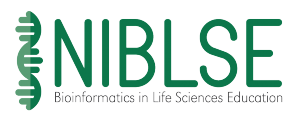Resources
Sequence Similarity in Developmental Biology - A Bioinformatics Exercise Using Myostatin
Author(s): Barbara Murdoch
Eastern Connecticut State University
1364 total view(s), 2523 download(s)
Summary:
This exercise leads upper level biology majors in an inquiry-based excursion to determine how similar the signaling molecule, myostatin, is between humans and mice, using a basic set of bioinformatics tools and concepts.
Contents:
1.Murdoch_NIBLSEFMNTeachingNotesTemplateSp19.docx(DOCX | 19 KB)
2. Student handout_Murdoch_Similarity in Developmental Biology.docx(DOCX | 32 KB)
3. S3. BLAST_handout_Kleinschmit et al.docx(DOCX | 33 KB)
4. TGF-b signaling pathway.pptx(PPTX | 287 KB)
5. Bioinformatics_BIO 434 WORKSHEET_vfinal2.docx(DOCX | 18 KB)
5.1. Bioinformatics_BIO 434 WORKSHEET answers_vfinal2.docx(DOCX | 233 KB)
- Sequence Similarity: An inquiry based and "under the hood" approach for incorporating molecular sequence alignment in introductory undergraduate biology courses | CourseSource
- License terms
Description
This exercise integrates bioinformatics with developmental biology, and provides an introduction regarding how to use bioinformatics to assess sequence similarities. The implications of these similarities provides students with a basic understanding of how model organisms can provide useful information regarding human health and disease.
Cite this work
Researchers should cite this work as follows:
- Murdoch, B. (2019). Sequence Similarity in Developmental Biology - A Bioinformatics Exercise Using Myostatin. Bring Bioinformatics to Your Biology Classroom, QUBES Educational Resources. doi:10.25334/Q45F3H

